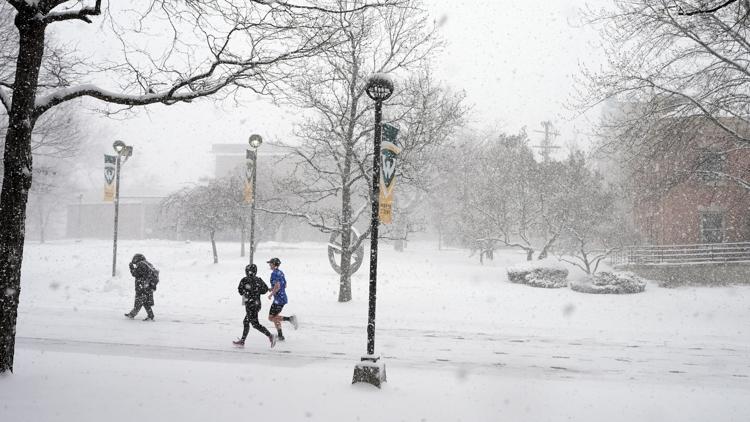Specifically, the almanac points to the mountainous regions of New England and the Northeast to get the most snow.


WASHINGTON — The Farmers' Almanac, which has provided weather guidance for more than 200 years, is predicting a wet and windy winter for 2024 and 2025.
The forecast, which covers 16 months of predicted weather, says the U.S. will likely have a "wet winter whirlwind," with rapid-fire storms bringing rain and snow.
The almanac predicts a deep chill will settle over the Northern Plains and Great Lakes regions, with southern areas also getting hit with some frigid temperatures.
"Taking into account the effect La Niña has on the weather, along with our long-standing formula, we anticipate the winter of 2024-25 will be wet and cold for most locations," the almanac's website predicts.
That cold weather is predicted to bring a flurry of snow, with above-average amounts of white falling from the sky. Specifically, the almanac points to the mountainous regions of New England and the Northeast to get the most snow, while saying the Pacific Northwest, Great Lakes and Southeast will need to prepare for a wet and slushy season.
On the coasts, residents can expect heavy rain, if the almanac is to be believed.
But for those in the Southwest and South Central areas of the U.S., a drier winter is predicted this year.
The Farmers' Almanac extended weather forecast is a tradition that dates back to 1818.
Is the Farmers' Almanac accurate?
The Farmers' Almanac, like it's similarly named competitor the Old Farmer's Almanac, relies on a closely-guarded proprietary formula to make its predictions. According to the almanac's editors, their forecaster is only referred to by the pseudonym "Caleb Weatherbee" to prevent them from being disturbed.
Sandi Duncan, an editor of the Farmers' Almanac, told science magazine Scientific American that the current "Weatherbee" has been with them for about 30 years, and that his formula is based primarily on the solar activity cycle and the motion of the moon, as well as tidal action and certain winds in the stratosphere over the equator.
“Right now he’s primarily looking at the motion of the moon and the lunar cycles and how they lined up with weather patterns from years ago,” Duncan told the publication.
That tends to fly in the face of modern meteorology, which relies on public data about weather patterns measured by satellites, heat maps and complex algorithms, and is often peer-reviewed in real time by others in the field.
The Farmers' Almanac also has predictions that extend well beyond any modern forecast. Because of the unpredictability of global climate patterns, it's nearly impossible to determine with any certainty what kind of weather will happen in any given area more than about two weeks ahead.
According to a University of Illinois study in 2010, the Almanac is only 52% accurate, which is basically the same odds as flipping a coin.
.png)









 English (US) ·
English (US) ·